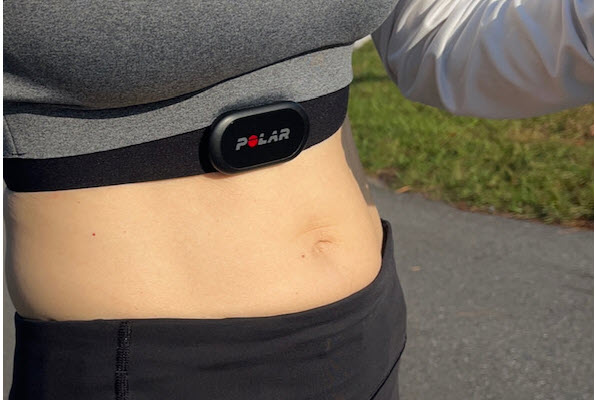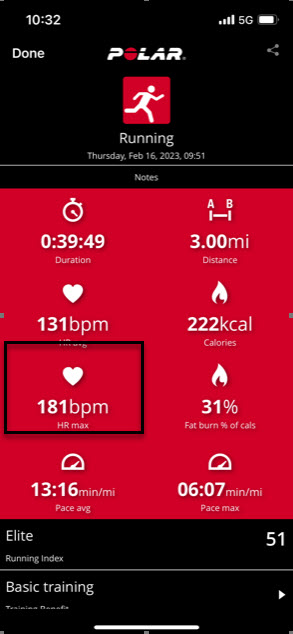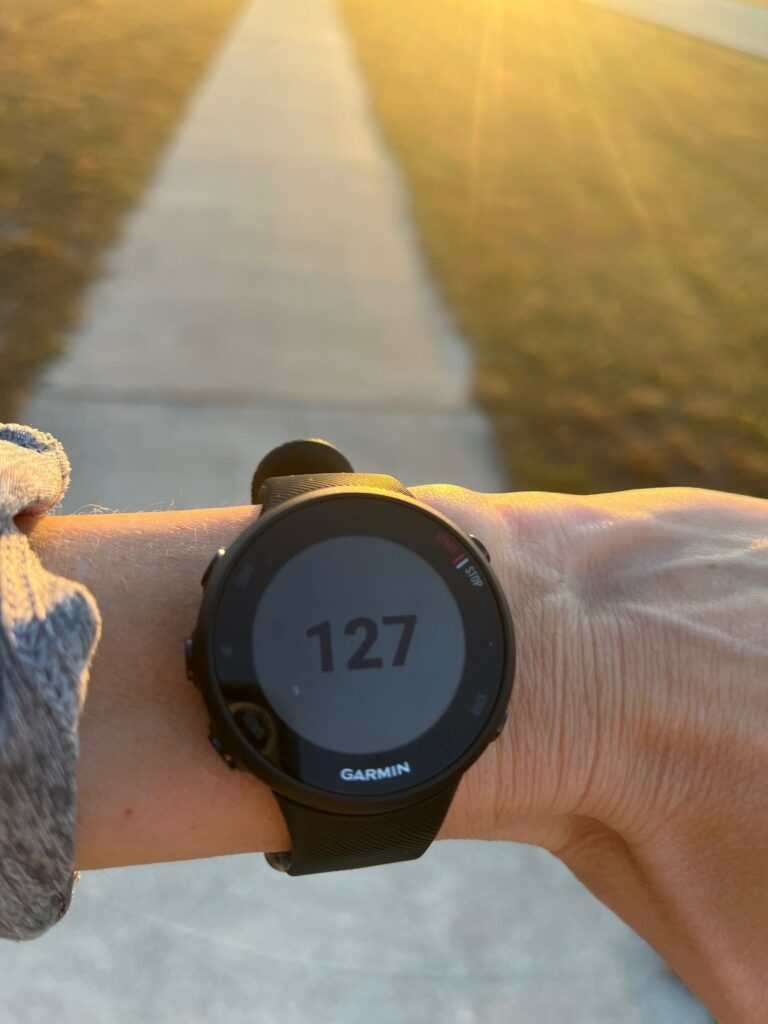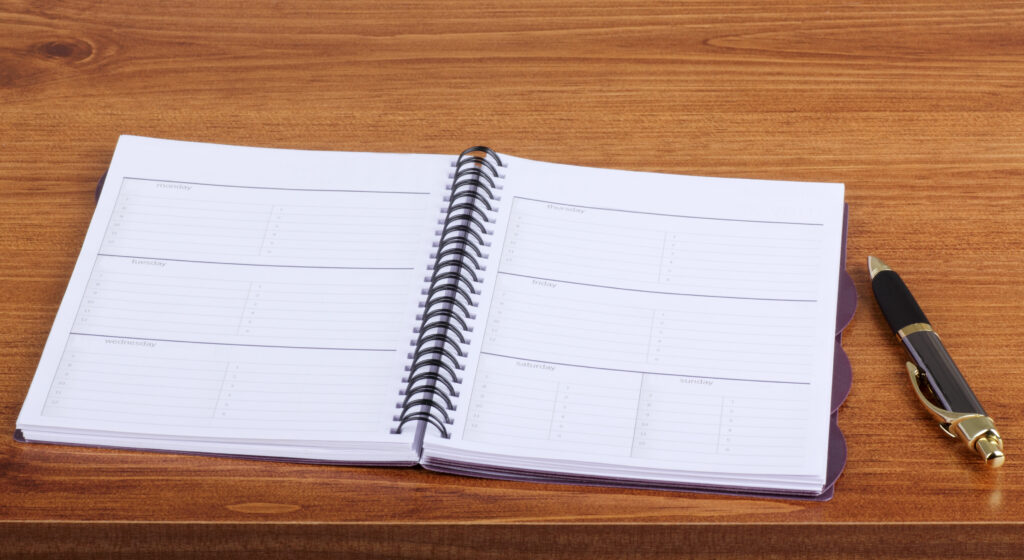
If you are looking to get the most out of your runs and improve running performance, it can be more fun than you think. I’ve found using a heart rate monitor on my runs can really dial in the training, optimize my workouts. It provides reliable feedback about individual health and fitness which translates into improved running performance.
In general, a heart rate monitor can be used to improve performance by giving objective feedback about running intensity and overall fitness levels. Max heart rate, resting heart rate, heart rate training zones, and heart rate recovery are all important metrics to support your running goals. Monitors can be used to help adjust workouts while providing valuable data about your overall fitness.
Heart rate monitors take the guesswork out for how hard or easy you should be running. This allows you to train at the right level for you. It also provides valuable information about how your body is responding to exercise so you can make needed adjustments. Read on for more on how heart rate monitors can be a great tool to help you reach your performance goals.
1. Wear a heart rate monitor on ALL your runs
This may sound obvious, but to improve performance you need to wear a heart rate monitor on all your runs. You need all the feedback, including any cross-training you may be doing, to optimize each workout and monitor your weekly stats.
I mention this first as I’ve noticed that I tend to NOT wear my chest heart rate monitor for every run. Chest heart rate monitors are not as convenient or comfortable as wearing a watch, so it was easy to skip wearing them. I do much better with wrist-worn heart rate monitors, but I am improving at using my chest strap.
Form the habit now of wearing a heart rate monitor every time you exercise, including any cross-training (more on this later), and remember to have a good charge. Chest heart rate monitors have replaceable batteries that should last for many months. Wrist-worn monitors usually need to be re-charged every few days so keep an eye on the power levels to ensure it can make it through the workout.
2. Make sure you are using a reliable monitor

Not all heart monitors are created equal. Different brands and different types tend to be more accurate than others. If you are using a heart rate monitor to dial in your training for greater improvement then the more accurate monitor you wear, the better.
Traditionally chest heart rate monitors are the most accurate as they are closer to the heart and detect on the electrical signals of the heart much like an EKG. While the exact percentage of accuracy may depend slightly on the brand or model, all agree that there is a very high degree of accuracy (as high as 99%). For more on chest strap monitors and women see my article here.
Wrist-worn heart rate monitors are not as accurate as chest straps for several reasons. They rely on optical light that basically reads your pulse to get a heart rate. There are many things that disrupt a good signal such as having a good fit, sweat, and even tattoos and skin pigmentation.
Lastly, keep in mind that different brands and types of wrist monitors vary in levels of accuracy. I started with a Fitbit Inspire which was great to track my heart rate all the time, even when sleeping. However, it was very inaccurate when starting a workout and during high-intensity workouts. I’ve read that many wrist-worn watches have this same issue. However, my Garmin 45s is almost always spot on with my chest heart rate monitor (yes, I use two types for my workouts).
3. Find your max heart rate

Different plans will have different training zones or levels of intensity, but most intensity levels fall into the same general percentages of max heart rate. You will first need to find your max heart rate or the highest amount the heart can sustain in cardio training. Getting an accurate max heart rate is key to determining the right training zones for your performance goals (more on that in the next section).
Max heart rate can be estimated with a calculation, but this can be very inaccurate. For example, using the traditional method I would be at least 10 beats below what my field test indicates my max heart rate to be. While this difference may not matter much in aerobic zones, when targeting high-intensity workouts I would likely be training at a moderate level by using the traditional calculation.
A stress test is the most ideal and accurate way of finding your max heart rate, but this may not be practical for most people. An alternative would be an at-home stress test commonly called a field test.
If you have a heart rate monitor and are in good health with no existing heart conditions or disease, a field test can provide a more accurate number than a calculation. This should be done with a buddy and if you feel nauseous, faint, or experience chest pains stop immediately and seek medical attention.
At-home field test for finding max heart rate
- At a track, do a warmup mile or two, followed by a mile at tempo pace, then gradually increase your speed over 400 meters before running a final quarter all out. “(Find Your True Max Heart Rate | Runner’s World (runnersworld.com))
- Warm up for 10 minutes. Perform 3 repeats running hard for 2-3 minutes and then resting 2-3 minutes. With each repeat increase the speed you run. After the last repeat check your max heart rate (this is the one I do, but can’t find where I found it)
- Another option from runner’s world see here (How To Calculate Your Maximum Heart Rate For Running – Runner’s World (runnersworld.co.za)
**Note, if you are not used to running at max speed your true max heart rate will likely be a little higher than the field test shows as you are not used to pushing yourself. You may find that doing a field test a second time a few days later may lead to a higher number (I first read this and then experienced this myself).
A field test is really hard but performing it even once will likely give you a better estimate than a calculation as heart rates can vary wildly from person to person. You can also use a calculation. some of the most popular are below
- Traditional MHR = 220 – Age
- Hunt formula = 211-(0.64 x age)
- Gulati formula for women = 206 – (.88 x age) (see article here)
4. Find your heart rate training zones based on max heart rate
With a good estimate of your max heart rate, you can now calculate training zone by heart rate specific to your training goals and needs. You can use the general chart below for percentages to use for each target zone.
Keep in mind the zones are estimates and your aerobic capacity and lactate threshold can improve with training. The exact threshold limit between aerobic and anaerobic will vary for each person and depends on many things including fitness level.
If you are new to running and exercise you may have lower anaerobic and lactate threshold percentages than the percentages shown.
| Zone | Intensity | Percentage of HRmax | Run Type | Purpose (how enhances performance) |
| Zone 1 | Very light | 50–60% | Recovery Workout or Run | Increase fitness as running is a pre-fatigued state |
| Zone 2 | Light | 60–70% | Easy Run | Builds aerobic engine & fat-burning engine |
| Zone 3 | Moderate | 70–80% | Long Run | Improves endurance and raises aerobic metabolism |
| Zone 4 | Hard | 80–90% | Tempo/ Threshold run | Improves endurance by raising lactate threshold |
| Zone 5 | Maximum | 90–100% | Intervals/Speed workouts | Improves VO2max, running speed, and running economy |
Training in the above zones is important for performance improvement based on your running or fitness goals. Most runners will benefit from incorporating a variety of running intensity levels with more emphasis on the runs that are more closely associated with their performance goals.
5. Make adjustments to train in the heart rate ranges for each workout and run

Heart rate training is a more objective way of running a targeted run than by perceived effort or pace. From experience, I’ve found that perceived effort can be deceptive as some days I think I’m running harder than I am or that I’m running too hard and need to back off.
Perceived effort is also not a reliable method when doing a HIIT workout, especially with workouts other than running. It can be more difficult than you think to get your heart rate up when doing exercises you normally don’t do at higher intensities.
As an example, I decided to start using my single-speed bicycle for some cross-training rather than my leisurely rides through the neighborhood. I had the great idea to do some HIIT cardio at the same time to improve my VO2max. It’s a good thing I was wearing my heart rate monitor. I’m not a very good biker so what I thought was an intense effort near max effort turned out to only be a moderate intensity.
Pace is also a poor indicator of intensity, and there are many things that can impact your heart rate from day to day including temperature, humidity, stress, sleep habits, illness, etc. By training by pace, you could be training in the wrong zone for much longer than you should. This can lead to fatigue, soreness, burnout, and even injury.
Running by heart rate is the best way to ensure you are staying in the right zone for each workout. This will optimize your workouts, so you get the most benefit for each of the different workouts while minimizing the risk of overtraining.
6. Track your resting heart rate (RHR)

Your resting heart rate (RHR) is a good metric to track to help you reach your running and fitness goals. The lower your resting heart rate, the healthier your heart is as it is more efficient, pumping a greater amount of blood with each beat.
Normal RHR ranges are between 60 and 100 beats per minute but highly fit, trained athletes can have a resting heart rate as low as 40. Ryan Hall, a famous competitive long-distance runner, had one of the lowest recorded resting heart rates of 26 bpm.
It is recommended to take your heart rate first thing in the morning before you get out of bed. By tracking your heart rate most mornings, you will have a good baseline to use in your training going forward.
Your resting heart rate is an important indicator of improved fitness. You should see your resting heart rate decrease as you become fitter. It can also be the first indication of overtraining if you notice your resting heart rate is elevated more than normal (even just a few beats). See here for more information.
By concentrating on rest and recovery when you have a higher-than-normal resting heart rate you can support your performance goals. Most of the gains of a workout come during the recovery phase as your body works to repair and rebuilds itself stronger. See my article here on recovery.
In addition, if you are exercising regularly and do not notice any improvement in your resting heart rate you may need to evaluate other lifestyle habits. Stress, poor nutrition, and insufficient sleep can all impact your fitness. The most common hindrance to improved performance when following a good exercise plan is a person’s diet.
6. Use your heart rate recovery (HRR) for performance improvement

Heart rate recovery (HRR) is another important indicator of heart health and fitness. It tells a more complete story about how your heart responds to exercise. You can learn a lot about how it recovers and your overall cardiac fitness (see the Cleveland Clinic article here).
Heart rate recovery measures the capacity of your heart to return to normal function after exercise. The quicker your heart can recover and return to normal, so the higher the number the better.
One of the most common ways to calculate HRR is to stop and immediately measure your heart rate 1 minute after reaching a max heart rate. Measuring 30 seconds and even 2 minutes afterward can also be used.
Heart rate recovery is calculated as follows.
HRR = Peak heart rate during exercise – heart rate 1 minute after stopping
Exercise generally improves your heart rate recovery so you should notice your heart rate drop quicker as you get fitter. Tracking your HRR is a great way to ensure your exercise routine is helping you meet performance goals.
It is recommended to check your heart rate recovery every 3 weeks as your heart rate can vary from day. Factors such as weather, humidity, stress, caffeine, how your slept, and more can affect heart rate. You should note any abnormal readings and talk with your doctor as your HRR can indicate your risk of heart disease (see my article here for more on HRR).
7. Track total time spent in each zone weekly
Tracking the total time spent in the different heart rate zones (shown above) each week can also lead to better performance. You will want to spend more time in the zones most closely related to your performance goals.
Performance related to increasing short distance speeds such as the 1 mile or 5K times, you should be concentrating on more training centered around zone 5. These distances are typically run in Zone 5 so you will want to make sure you’re hitting this zone as prescribed in a training plan.
Performance goals to finish a first marathon will have a greater emphasis on endurance training in zones 2 and 3 and a smaller percentage of time training in zone 5. Training plans for novice marathoners have weekly plans with this in mind as training at a higher heart rate can lead to injury.
More experienced marathon runners usually have the goal of improving their marathon time. These plans tend to have slightly more time planned in zone 4 and 5 as the body is conditioned to handle the higher intensity levels. Ensuring training is done in the targeted higher levels with a heart rate monitor is often seen in more experienced runners.
8. Keep a training journal

As seen above, there is a lot you can track and should be tracking for dialing in your workouts and getting the most benefit from them. Keeping a running journal is very popular and is an easy way to track your progress.
Most running apps will frequently track your heart rate metrics, but they don’t record how sore you were the next day. Tracking how you felt on your runs, how sore you were the next day or two, any pains or niggles will greatly enhance your heart rate training to reach your performance goals.
Keeping a journal can be incredibly satisfying, especially during a half-marathon or marathon training program. In addition, you don’t have to worry if you change the app you use to track your heart rate.
A journal can also help you track things that may be affecting your heart rate such as heat, humidity, hydration, stress, how you slept, etc. You may start to notice trends that affect your heart rate and thus your pace and performance.
This will allow you to focus on making needed adjustments to support your performance goals. A heart rate monitor makes it easier to see the results of changes in your lifestyle habits. For example, experiment with going to bed earlier and track the heart rate metrics discussed above.
Key Takeaways
Heart rate monitoring is a great addition to a training program. It can really help you dial in your runs and optimize your workouts. In addition, it can provide valuable information about your overall fitness level to help reach your performance goals.
A heart rate monitor is like having your own personal coach to help motivate and monitor your training. While it does not replace a coach, it is another great strategy to help you become the best runner you can be.